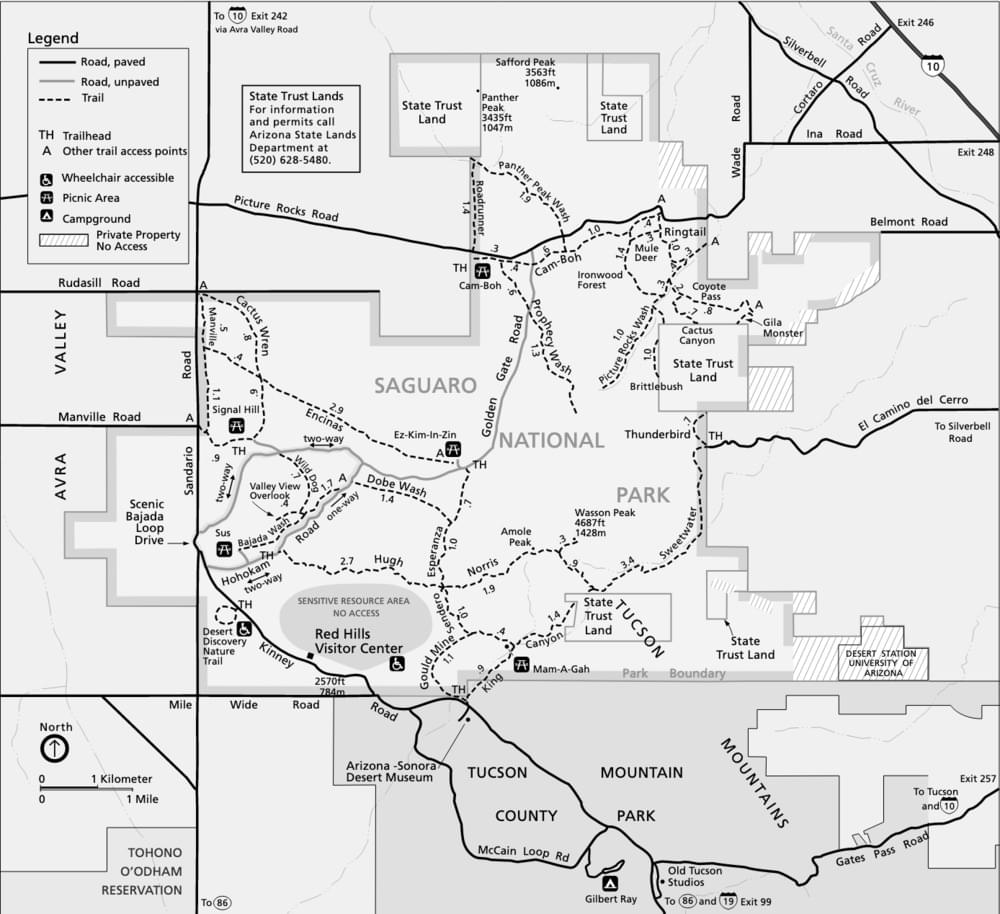Saguaro NP--West--King Canyon Trail
Saguaro NP--West--King Canyon Trail
Tucson Mountain District (West) 2700 North Kinney Road Tucson, Arizona 85743
Trails in the Tucson Mountain District brochureSaguaro National Park website
Saguaro National Park maps
Saguaro National Park - West Hiking Guide
About this Location
The trailhead and parking area for the King Canyon Trail are directly across Kinney Road from the Arizona-Sonora Desert Museum, two miles east of the Red Hills Visitor Center. The first .9 mile is a gradual climb up to Mam-AGah Picnic Area, which was named after a Tohono O’odham Indian Chief. The next 1.4 miles to the junction of the Sweetwater Trail are steeper. Numerous switchbacks on the next .9 miles lead to the Hugh Norris Trail. The final .3 miles ascends the Hugh Norris Trail to the top of Wasson Peak (elevation 4,687 feet), the highest point in the Tucson Mountains. Livestock are prohibited above the Sweetwater Trail junction. The trail is 3.5 miles, one way.
About Saguaro NP West - Tucson Mountain District
See all hotspots at Saguaro NP West - Tucson Mountain District
Saguaro National Park is composed of two distinct districts: The Rincon Mountain District and the Tucson Mountain District. The Tucson Mountain District lies on the west side of Tucson, Arizona, while the Rincon Mountain District lies on the east side of Tucson. Both districts were formed to protect and exhibit forests of their namesake plant: the Saguaro Cactus.
Most people think of Saguaro National Park as being a desert park. True, the lower elevations of the park encompass Sonoran Desert Vegetation, but there is much more to Saguaro National Park than just cacti.
The Tucson Mountain District of Saguaro National Park ranges from an elevation of 2,180 ft to 4,687 ft and contains 2 biotic communities, desert scrub, and desert grassland. The average annual precipitation is approximately 10.27 in. Common wildlife includes the coyote, Gambel’s quail, and desert tortoise.
Content from Trails in the Tucson Mountain District brochure and Saguaro National Park webpage
 Saguaro National Park - West Trail Map
Saguaro National Park - West Trail Map